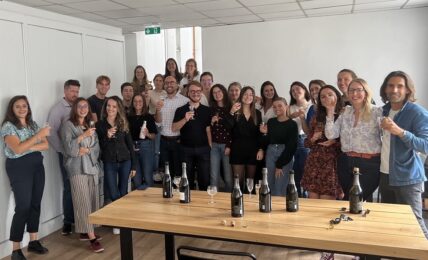Steel and aluminium producers are among the largest carbon emitters globally. While they are well positioned to meet decarbonisation targets for this decade, technological uncertainty, costs and regulatory pressure means the longer-term outlook remains uncertain. Terry Ellis, Director, Climate Transition Risk, and Alexander Griaznov, Director, Corporate Ratings at S&P Global Ratings, explore
The metals sector has attracted significant attention for its greenhouse gas (GHG) emissions. The largest segments of the sector by both production and emissions, steel and aluminium producers have faced growing pressure from stakeholders and regulators to decarbonise. Yet despite setting targets, steel and aluminium production remains dominated by relatively high-emission processes, and potential solutions are fraught with technological uncertainty.
What’s more, the cost to transition will be significant – not just in terms of technology, but also as a result of growing credit risks such as higher carbon prices. Indeed, regulation such as the EU Emissions Trading Scheme (EU ETS) and the Carbon Border Adjustment Mechanism (CBAM) will likely have implications for decarbonisation costs, which could materially impact credit quality further down the line. As such, despite being on track to meet near-term decarbonisation goals, long-term prospects for the metal sector are less certain.
Decarbonisation challenges prove stubborn
Demand for metals has been consistently driven by decades of population growth and economic expansion. Steel and aluminium, for instance, contribute significantly to global economies and are central to enabling the energy transition as they serve as major components in infrastructure such as wind turbines, transmission and electric vehicles.
In response to growing regulatory and stakeholder pressure, most major, metals companies rated by S&P Global Ratings have set near-term decarbonisation targets and outlined ambitions to completely decarbonise by 2050. Yet despite declining average emissions per unit of revenue, metals and mining companies’ emissions growth continues to outpace that of other industries. Indeed, between 2016 and 2021, rated metals producers’ scope 1 and scope 2 emissions increased by 14% on an absolute basis due to increased overall output. What’s more, few have detailed plans to achieve longer-term goals.
A key issue is that current, carbon-intensive production methods, including smelting for aluminium and blast furnaces for steel, will be difficult to replace. Much of the blast furnace capacity has been added in the last 10-15 years and, given furnaces have a lifespan of up to 40 years, still have decades of production ahead of them. Since this technology is expected to remain prominent in the coming years, the intensity of steel-making emissions appears unlikely to radically change in the near term.
Existing technologies can reduce but not eliminate emissions
Fully decarbonising steel will entail difficult changes to existing production processes. Nonetheless, steel and aluminium companies are adopting, or preparing to adopt, a range of key pathways to decarbonisation over shorter and longer-term horizons.
Energy efficiency measures – including energy recovery, off gas recycling and better controls and processes – have long been a focus for metal makers, as they directly link to operating and support costs. These measures should continue to yield small reductions in emissions. However, once low hanging fruit has been picked, their impact could be limited.
Meanwhile, some metals producers may be able to develop their own renewable generation, but securing low-carbon power sources will present a major challenge for many. Companies with existing fossil fuel assets, and particularly those with many years of service remaining, will prove reluctant to invest in new, clean power – especially given renewables’ significant upfront capex needs.
Process changes, such as switching from a blast furnace to an electric arc furnace (EAF) or adopting hydrogen-based steel production, have more potential and could significantly lower the intensity of carbon emissions. In addition, Direct Reduced Iron (DRI) – which replaces coal with hydrogen in the steel-making process – offers efficiency in primary iron ore production and reduced dependency on coal. That said, capex limitations and a reliance on high quality iron core could mean it is difficult to integrate into existing locations.
Climate transition risk continues to increase
As one of the heaviest GHG emitters, the metals sector has been a target for regulation – one of the main drivers for emissions reductions.
S&P Global Ratings expects that metals companies operating in the EU will face increasing costs related to carbon emissions from 2026, when the rules of the EU ETS will be updated in line with the European Green Deal and Fit for 55 packages. Notably, changes to the existing “cap and trade” scheme will result in a significant reduction in tradable, Scope 1 carbon dioxide allowances, known as EU Allowances (EUAs), and the gradual phasing out of free allowances from 2026 to 2035.
S&P Global Ratings expects that a reduction in the number of EUAs will support continued price increases. Meanwhile, the phase out of free allowances will mean that companies that do not reduce emissions will increasingly have to purchase EUAs through the EU ETS.
EU ETS reform will go hand-in-hand with the launch of CBAM, which could affect rated companies outside of the EU. CBAM seeks to equalise carbon costs between domestically produced and imported products, thereby avoiding so-called carbon leakage – where production moves overseas to avoid carbon-related costs in the EU.
Under CBAM, EU importers of key commodities produced outside of the EU – including steel and aluminium – will have to pay additional taxes equal to the cost of EUAs, based on the carbon intensity of products imported. In practice, this means that the cost of carbon-intensive imports, such as steel and aluminium, will also increase in EU ETS participating countries.
Regulation could increase credit risk
The formal introduction of the CBAM and the gradual removal of free allowances under the EU ETS means the cost of carbon will have an increasingly material impact on the financial profiles of EU producers and companies with significant exports to the EU.
Currently, strong metrics and likely supportive markets should help metals companies mitigate the high cost of decarbonisation. However, if higher costs coincide with a trough in the metals-price cycle, pressure on the credit quality of some companies could materially increase.
Looking ahead, the metals sector will face growing pressure to decarbonise. While existing technologies should enable them to meet shorter-term targets, solutions capable of delivering more substantial reductions in emissions still come with significant uncertainty. In turn, as pressure continues to build with the introduction of new rules and measures, regulation will likely remain a key credit risk transmission channel for the sector.


